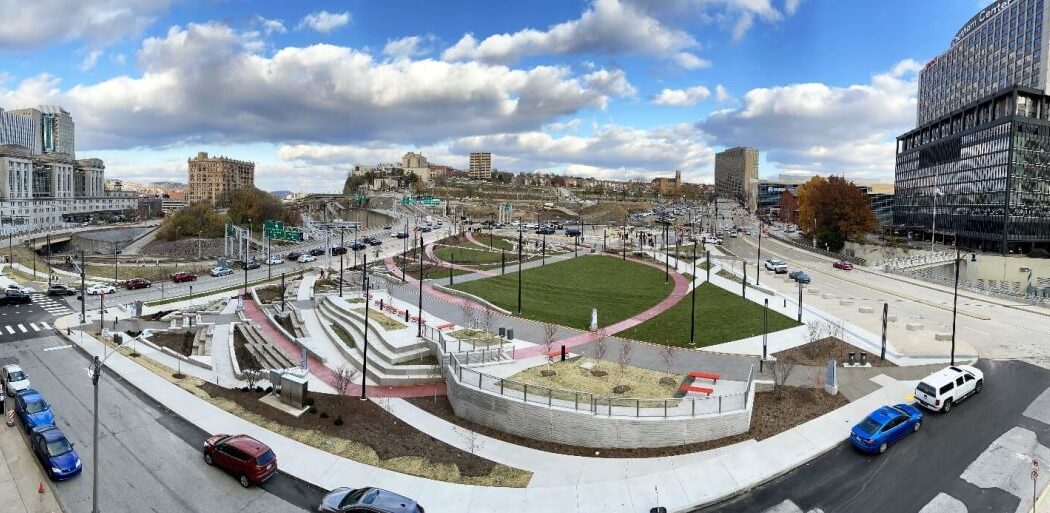As stated in the 2020 book, RECONOMICS: The Path To Resilient Prosperity, “80% of the revitalizing work done by urban planers and civil engineers in the 21st century will undo 80% of the work done by their predecessors in the 20th century.”
The latest example of this dynamic at work can be found in Pittsburgh, Pennsylvania, which has now become one of those enlightened communities—like Philadelphia, Dallas and Seattle—that is revitalizing a neighborhood by undoing the past mistakes of urban highway planners.
With the completion of Frankie Pace Park, a devitalizing highway that severed the historic Hill District from the downtown core has been covered and repurposed as a revitalizing, $32 million public space.
Inaugurated last November, the 3-acre park turns a section of Interstate 579/Crosstown Boulevard—built in the 1950s and 60s—from urban blight to urban renaissance.
Governor Tom Wolf joined federal, state and local leaders at a ribbon cutting ceremony last year, which renamed the “I-579 CAP Park” after Frankie Pace, the famed Hill District community advocate.
The project reconnects the Hill District to downtown Pittsburgh in a way that improves public transportation, and boosts economic revitalization in the Hill District, and the Pittsburgh region in general.
“This project is a fantastic example of what we can accomplish when we come together to invest in our infrastructure,” said Governor Wolf.
“An investment in infrastructure is an investment in communities and the people who bring them to life. This is what innovative, ambitious, community-centered infrastructure investment looks like, and my administration was proud to support this project through state investment,” he added.
When I-579 was constructed, it severed the connection between the Hill District and downtown Pittsburgh, contributing to the devitalization of both.
The I-579 CAP project reestablishes this connection through the construction of a 3-acre park with accessible pedestrian pathways, bicycle routes, and recreation and education areas.
“The creation of this park was a community-focused project from start to finish,” Wolf continued.
“This project has turned a space of division into a space of connection. The I-579 CAP project addresses challenges in the community, promotes community and economic development, strengthens transportation networks and boosts our state’s economy through environmentally conscious, community-centric design,” he concluded.
The I-579 CAP project received $5.23 million dollars in RACP funding, $650,000 dollars through the Pennsylvania Department of Transportation (PennDOT) Multimodal Transportation Fund, $1.35 million from the Commonwealth Financing Authority and a $500,000 grant from the Department of Conservation and Natural Resources (DCNR) Keystone Fund.
Photo courtesy of LaQuatra Bonci Associates.

